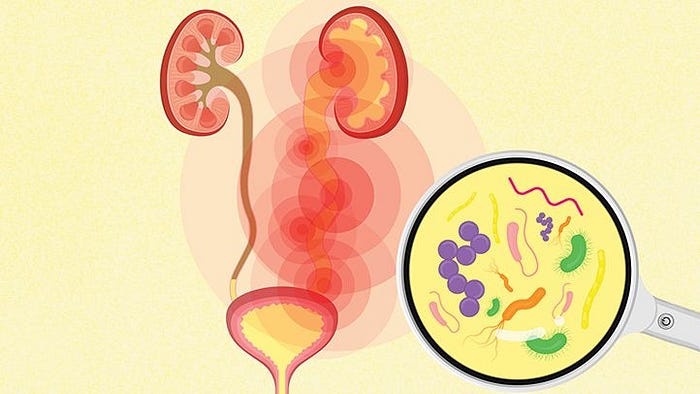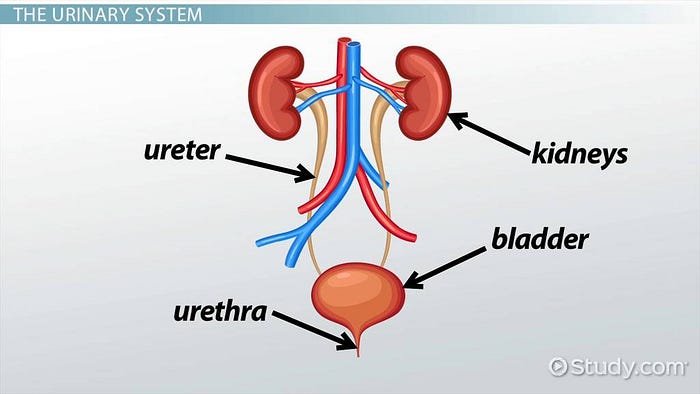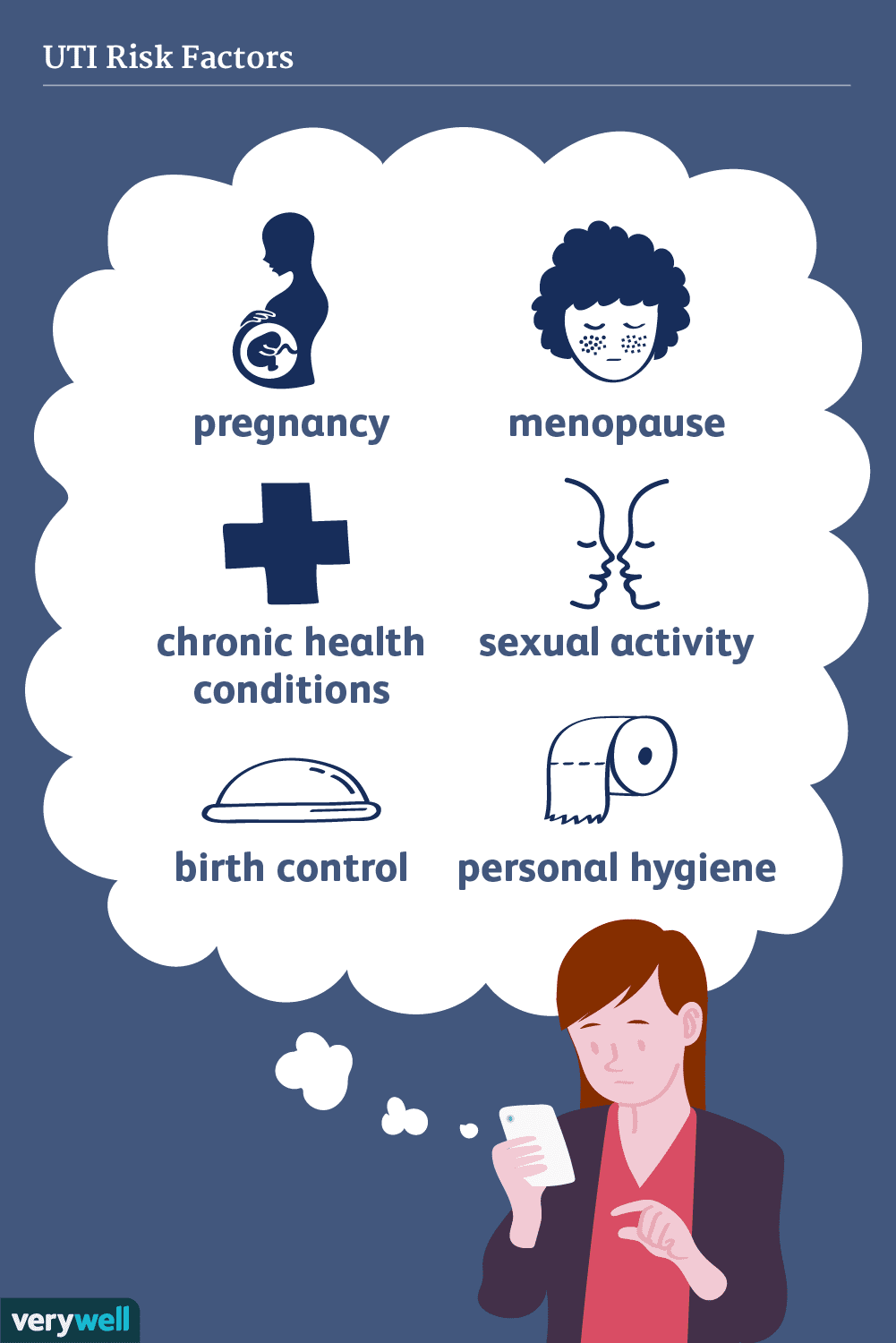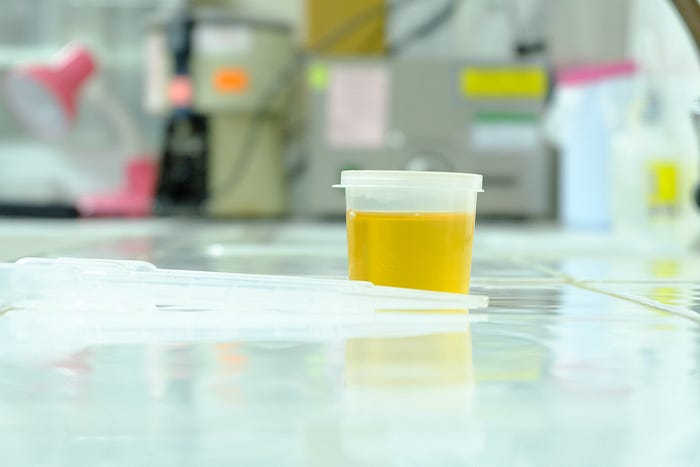- “Empowering Emergency Medicine Physicians”
- “Queue Management Software and Hospitalists in Modern Healthcare”
- “Enhancing-Pediatric-Infectious-Disease-Care”
- “Revolutionizing-Geriatric-Care”
- “Optimizing-Patient-Care-in-Pediatric-Rheumatology”
- “Pediatric-Pulmonology-Care”
- “Revolutionizing-Pediatric-Gastroenterology”
- “Enhancing-Pediatric-Neurology-Care”
- “Optimizing-Pediatric-Cardiology”
- “Enhancing-Pediatric-Endocrinology-Care”
- “Empowering-Neonatologists-with-EMR-Software”
- “Pediatrics-in-Focus”
- “Empowering-Neurologists-with-Electronic-Prescriptions”
- “Streamlining-Dermatology-Practice”
- “Streamlining-Psychiatry-Practice”
- “A-Game-Changer-for-Infectious-Disease-Specialists”
- “Allergist/Immunologist-Practices-with-QME-EMR-and-Hospital-Management-Systems”
- “Empowering-Hematologists-and-Revolutionizing-Healthcare-Management”
- “Optimizing-Healthcare-with-HMIS”
- “Transforming-Healthcare-with-Endocrinologist”
- “Healthcare-Management-with-QMe-EMR-for-Nephrologists”
- “Revolutionizing-Healthcare-Management-with-Cardiologist”
- “Streamlining-Operations-with-Queue-Management-Software”
- “Optimizing-Healthcare-Delivery”
- “Transforming-Healthcare-Management”
- HMIS And Decision Support Systems
- Dengue Unveiled: An Overview of Causes, Symptoms, and Prevention.
- Dengue Fever: Unraveling the Mosquito-Borne Menace.
- HMIS-and-Continuity-of-Care
- Project-Management-for-Successful-HMIS
- Catalysts of Wellness: The Transformative Power of Diagnosis and Screening in Healthcare
- Patient-Data-Management
- Guardians of Healthcare: The Vital Role of Fraud Detection in Ensuring Ethical Care
- Unlocking Insights
- Healthcare in the Digital Age: The History Of Development Of HMIS
- Transforming Healthcare
- Safeguarding-HMIS-Data
- HMIS-Integration-Challenges
- ANXIETY UNVEILED: CONQUERING FEARS AND CULTIVATING CALM.
- BEYOND THE BLUE: EMBRACING LIGHT ON THE PATH OF DEPRESSION.
- BEYOND THE BLUE: EMBRACING LIGHT ON THE PATH OF DEPRESSION.
- HMIS and Resource Allocation
- HMIS Data Accuracy and Integrity
- SOOTHING THE SILENT PAIN: UNDERSTANDING VULVODYNIA.
- Impact of HMIS on OPD Operations
- In Patient Management Through Health Management
- WITHIN THE SHADOWS: UNDERSTANDING BRAIN TUMOURS FROM WITHIN
- HMIS-and-Health-Insurance-Integration
- HMIS-Data-Analytics-for-Preventive-Care
- SILENT INTRUDERS: UNRAVELLING THE MYSTERIES OF PELVIC INFLAMMATORY DISEASE
- BREAKING FREE: OVERCOMING THE HURDLE OF URINARY INCONTINENCE
- “HMIS and Doctor-Patient Communication”
- HEALING INSIGHTS: THE POWER OF THE HOSPITAL MANAGEMENT INFORMATION SYSTEM.
- SOLVING THE OVARIAN PUZZLE:UNDERSTANDING OVARIAN CYST INSIDE OUT
- Usability And User Experience In HMIS
- WARRIOR’S BATTLE: TRIUMPHING OVER UTERINE CANCER
- POLYCYSTIC OVARY PUZZLE: UNRAVELLING THE ENIGMA OF PCOS
- Unlocking-the-Potential-of-HMIS-Data-for Medical-Research-and-Healthcare-Policy-Enhancement
- Feminine Health Unplugged: Empowering Women in Vaginal Infection Awareness
- Revitalizing Feminine Comfort: A Journey Through Vaginal Wellness.
- HMIS Vendor Selection Guide
- UNDERSTANDING FIBROIDS: NAVIGATING THE INTRICACIES OF UTERINE HEALTH.
- Best Practices for Data Migration in Healthcare Management Information Systems (HMIS)
- CONCEIVING HOPE: NAVIGATING THE JOURNEY OF INFERTILITY
- MENSTRUAL IRREGULARITIES: CAUSES AND TREATMENT
- RISING ABOVE: EMPOWERING WOMEN WITH PELVIC ORGAN PROLAPSE
- Leveraging HMIS for Enhanced Public Health Management and Disease Surveillance
- Challenges and Benefits of Implementing HMIS in Rural and Remote Healthcare Settings
- Securing Healthcare Continuity
- Pancreatic Cancer
- Lymphoma
- Leukemia
- Bladder Cancer
- Skin Cancer (Melanoma)
- COLORECTAL CANCER
- All about Prostate Cancer
- Fighting out the Disease of Lung Cancer
- Advances in Breast Cancer Treatment: A Comprehensive Guide
- Autism Spectrum Disorder (ASD)
- EHR SYMPHONY: HARMONIZING HEALTHCARE THROUGH ELECTRONIC RECORDS .
- Understanding Testicular Cancer: Detection, Treatment And Awareness.
- Childhood Obesity
- Kawasaki Disease
- Eczema (Atopic Dermatitis)
- Understanding Bone Cancer: A Brief Overview.
- Virtual Healing: Navigating Healthcare Through Telemedicine and Telehealth.
- Attention-Deficit/Hyperactivity Disorder (ADHD)
- PELVIC PAIN:CAUSES SYMPTOMS AND PREVENTIONS
- Type 1 Diabetes: Causes, Symptoms, and Treatment
- Gastroesophageal Reflux Disease (GERD)
- Battling Pneumonia: Unveiling the Stealthy Invader of the Lungs
- Unravelling the Complexity of Allergic Reactions: Understanding, Managing, and Thriving
- Rashes (Eczema, Dermatitis)
- UNDERSTANDING CERVICAL DYSPLASIA: CAUSES, SYMPTOMS AND MANAGEMENT
- Chicken Pox
- Endometriosis Unmasked: A Closer Look at the Silent Struggle
- Croup
- Hand, Foot and Mouth Disease (HFMD)
- THE DAWNING OF A NEW ERA: EMBRACING THE JOURNEY OF MENOPAUSE
- Strep Throat (Streptococcal Pharyngitis)
- Understanding Otitis Media(Ear Infection)
- 28th July In medical history!!
- Influenza (Flu) - Symptoms, Prevention and Management
- 27th July In medical history!!
- Respiratory Syncytial Virus (RSV) Infection
- SIGNIFICANCE AND ADVANTAGES OF HMIS: A DETAILED ANALYSIS
- Beyond Boundaries: Transforming Healthcare with Virtual Reality
- TRACK YOUR LIFE : A DETAILED UNDERSTANDING ON HEALTH MONITORING SYSTEM
- EXPLORING BENEATH THE SURFACE: UNDERSTANDING BARTHOLIN CYSTS AND ABSCESSES
- GUARDING GUT HEALTH: YOUR GUIDE TO POTENTIAL CROHN’S DISEASE PREVENTION.
- PATHWAYS OF HOPE: NAVIGATING THE CHALLENGES OF ESOPHAGEAL CANCER
- Gastric Battles: Confronting Stomach Cancer Head-On.
- HMIS IN SMALL CLINICS: A STEP TO A BETTER FUTURE
- Harmonizing Your Cycle: A Journey to Menstrual Health and Balance.
- Respiratory Syncytial Virus (RSV) Infection
- GUARDING OUR INTIMATE WORLD: A CLOSER LOOK AT STI
- Real-World HMIS Implementation Case Studies: Using Data to Transform Healthcare
- Gastroenteritis (Stomach Flu)
- Asthama - The Anatomy Of Breathing
- Influenza - A Silent Intruder
- Breast Cancer
Urinary Tract Infections (UTIs)
Urinary Tract Infections (UTIs)

A. UTIs are defined as urinary tract infections.
A bacterial condition known as a urinary tract infection (UTI) can harm the kidneys, ureters, bladder, and urethra, among other elements of the urinary system. Dangerous bacteria that cause pain and inflammation in the urinary tract invade and cause these infections. Lower abdominal pain, frequent and painful urination, and bloody or murky urine are typical indications and symptoms. All ages and genders are susceptible to UTIs, and early detection and antibiotic treatment are crucial to avoiding consequences. In order to prevent UTIs, good hygiene habits and hydration are essential. Recurrent UTIs can need more assessment and healthcare treatment.
B. Prevalence and Impact
Urinary tract infections (UTIs) are a severe health issue that impact millions of people worldwide each year. They are more frequent in women because of their shorter urethra, but they can also affect men and children. Significant discomfort, suffering, and disruption of everyday activities can result from UTIs. They could lead to serious problems like sepsis and kidney infections if not managed. UTIs may also have an impact on the healthcare system by raising the number of hospital admissions and antibiotic prescriptions. Promote early detection, appropriate therapy, and awareness of the condition to reduce the incidence of UTIs and mitigate their impact.
Physiology and Uses of the Urinary Tract

Urinary Tract System
Overview of the Urinary System
The urinary system, also known as the renal system, is responsible for eliminating waste products, toxins, and excess chemicals from the body by producing urine. It is made up of numerous important organs:
-
Kidneys: The two kidneys, which resemble beans, are located one on either side of the spine. They produce urine after filtering blood to remove impurities and excess substances.
-
Ureters: which are little tubes that carry urine from the kidneys to the bladder.
3. Bladder: A muscular bladder that holds pee until the body expels it.
4.Urethra: the urethra is a tube that aids in the process of urination.
B. Roles of Kidneys, Ureters, Bladder, and Urethra
1. Kidneys: By filtering waste materials, excessive salts, and toxins from the bloodstream to generate urine, the kidneys perform a crucial role in the urinary system. They also regulate the body’s fluid balance, electrolyte balances, and blood pressure. The ureters then carry the urine that the kidneys have made to the bladder.
2. Ureters: The kidneys and bladder are connected by thin tubes called ureters. They are primarily responsible for moving urine from the kidneys to the bladder, which aids in the body’s elimination of waste and extra fluid.
3. Bladder: Urine is kept in the bladder, a muscular sac in the pelvic, until the body needs to empty it. The brain receives messages from the bladder when it is full.
- Urethra: The bladder is attached to the external entrance of the urinary tract by a tube called the urethra. Its main job is to enable the bladder’s-controlled discharge of urine during urination, concluding the body’s waste removal process.
How Infections Can Occur
Urinary tract infections (UTIs) happen when noxious bacteria enter the urinary system and grow, generally through the vaginal region or digestive tract. This causes infection and inflammation. The danger of bacterial infiltration can be increased by elements including bad personal hygiene, inappropriate wiping after bowel movements, sexual activity, and the use of specific birth control methods. Once inside the urinary system, bacteria have the ability to adhere to the walls of the bladder or urethra, which can lead to infection. There are times when UTIs, which are more severe diseases, can be brought on by germs from other parts of the body that enter the bloodstream and travel to the kidneys.
Causes and Risk Factors of UTIs

The main reason for urinary tract infections (UTIs) is when dangerous bacteria, most frequently Escherichia coli (E. coli), enter the urine system. Due to the shorter urethra in women, as well as other characteristics like gender, sexual activity, pregnancy, and menopause, UTIs are more common in women than in men. Bacterial invasion can also be facilitated by conditions like kidney stones, urinary tract blockages, and catheter use. More susceptible individuals include those with diabetes, weaker immune systems, or persistent urinary tract infections. UTI formation is also influenced by poor personal hygiene, incomplete bladder emptying, and the use of specific contraceptives. In addition, certain physical disorders, such as urinary tract congenital anomalies, can increase a person’s susceptibility to recurrent infections. Implementing preventive measures and quick treatment requires a thorough understanding of these causes and risk factors.
Common Symptoms of UTIs
Common Symptoms of UTIs
Urinary tract infections (UTIs) are frequently characterized by frequent, urgent urination that is accompanied by a burning or painful sensation. Some people may have lower abdomen pain or discomfort, and the urine may seem hazy or have a strong odor. Other symptoms that may appear in more severe cases or when the infection extends to the kidneys include back pain, fever, and chills. While some people may only suffer mild symptoms, others may experience more severe discomfort as a result of UTIs. It is critical to detect these symptoms in order to seek immediate medical attention, start the appropriate therapy, prevent complications, and ensure a speedy recovery.
Diagnosing UTIs
A_. Physical Exam and Medical History_: Medical professionals frequently do a physical exam to check for any back or abdominal pain when diagnosing UTIs. They also gather the patient’s medical history in order to assess risk factors and the symptoms of a urinary tract infection.
B. Urinalysis and Urine Culture: A urine sample is examined for bacteria and white blood cells, which are signs of infection, during a urine analysis. A urine culture is carried out to pinpoint the precise bacterium that is causing the UTI in order to aid in the selection of the best drugs for therapy.
C. Imaging tests (Ultrasound, CT scan): Imaging tests, such as ultrasound and CT scan, are employed to see the urinary tract and spot any anomalies or UTI-related problems. They give precise pictures of the kidneys, bladder, and ureters, which helps in diagnosis and planning of treatments.
- UTI Management and Treatment: To get rid of the bacterial infection, urinary tract infections (UTIs) are usually managed and treated using antibiotic drugs. Which medications to use will depend on the specific bacteria that is causing the UTI and how susceptible they are to different healthcare treatments. To reduce discomfort during urinating, painkillers may also be provided. It is crucial to finish the prescribed antibiotic course in order to guarantee complete infection elimination and avoid recurrence. Flushing the urinary system with water helps remove germs. Further analysis may be required to pinpoint underlying reasons in situations of complicated or recurrent UTIs. Preventive steps can help lower the incidence of future UTIs, such as practicing excellent hygiene, peeing after sexual activity, and avoiding irritants.
Recurrent UTIs and Complications
Recurrent UTIs are defined as multiple urinary tract infections (UTIs) within a short period of time or numerous diseases spread out over the course of a year. This uncomfortable illness may be a sign of underlying problems such structural defects, kidney stones, or compromised immune systems. Recurrent UTI complications can result in kidney infections (pyelonephritis), which, if addressed, can harm the kidneys permanently. Antibiotic resistance may develop over time from repeated antibiotic usage for recurrent UTIs, making it more challenging to treat subsequent infections. To treat recurrent UTIs, doctors may employ additional procedures including imaging scans, cystoscopies, or urine cultures. Preventive interventions such as low-dose antibiotics, post-coital prophylaxis, or cranberry supplements may be suggested for some at-risk individuals. Reducing the burden requires making lifestyle adjustments and getting medical care when needed.
UTIs in Special Populations

A. Urinary tract infections (UTIs) in pregnant women: It can be dangerous for both the mother and the fetus. To avoid difficulties and guarantee a healthy pregnancy, prompt diagnosis and appropriate treatment are crucial.
B. UTIs in Children and the Elderly: Both children and the elderly are susceptible to UTIs. UTIs can manifest in youngsters with vague symptoms, necessitating a careful diagnosis and the right course of action. UTIs in the elderly might be more serious and complex, demanding prompt medical intervention to avoid any potential negative effects.
C.UTIs in People with impaired Immune Systems: People with weakened immune systems, such as those with HIV/AIDS or those on immunosuppressive therapy, may have urinary tract infections (UTIs) more frequently, severely, and with difficulty. In order to manage UTIs and avoid complications, careful observation, early identification, and customized healthcare treatment are essential.
Prevention and Tips for UTI Management

Maintaining appropriate hygiene practices, such as adequate wiping, remaining hydrated to wash out bacteria, and urinating frequently, are necessary to prevent UTIs. After bowel movements, women should choose front-to-back wiping instead than utilizing irritants on the vaginal area. After sexual activity, emptying the bladder can help prevent infections. Products made from cranberries might help prevent reoccurring UTIs. Antibiotic resistance must be combated by avoiding extended antibiotic use. For those who are prone to UTIs, low-dose antibiotics or post-coital prophylaxis may be prescribed. It is critical to seek medical attention as soon as a UTI is identified in order to prevent complications and ensure proper healthcare treatment. By maximizing treatment choices, allowing early detection, and streamlining patient data, QMe Healthcare System Software helps improve UTI management. By utilizing machine learning and artificial intelligence, such systems can help medical professionals identify high-risk patients, suggest personalized preventive measures, and ensure prompt follow-up care, ultimately improving UTI prevention and patient outcomes.
Future Directions in UTI Research and Treatment

Treatment of UTIs
Maintaining appropriate hygiene practices, such as adequate wiping, remaining hydrated to wash out bacteria, and urinating frequently, are necessary to prevent UTIs. After bowel movements, women should choose front-to-back wiping instead than utilizing irritants on the vaginal area. After sexual activity, emptying the bladder can help prevent infections. Products made from cranberries might help prevent reoccurring UTIs. Antibiotic resistance must be combated by avoiding extended antibiotic use. For those who are prone to UTIs, low-dose antibiotics or post-coital prophylaxis may be prescribed. It is critical to seek medical attention as soon as a UTI is identified in order to prevent complications and ensure proper healthcare treatment.
Conclusion
The bottom line is that urinary tract infections (UTIs) are still a major cause of worry for people of all ages. Early detection, suitable treatment, and prevention measures are essential to decrease the effects of UTIs and prevent complications. With continued attempts to create novel medicines, vaccines, and sophisticated diagnostic techniques, the future of UTI research is bright. UTI management can be transformed by integrating cutting-edge healthcare technologies like the QMe Healthcare System Software. [QMe Healthcare System Software]- https://www.qme.co.in/info/opd-management-software can analyze patient data effectively, help with early UTI identification, and suggest individualized prevention measures by utilizing artificial intelligence and machine learning. This seamless integration guarantees prompt follow-up care, optimizes treatment choices, and equips medical professionals to give better care, enhancing UTI prevention, treatment outcomes, and patient wellbeing in general. Future improvements in the UTI landscape will be largely dependent on the interaction between modern medical technology and sophisticated healthcare systems like QMe Healthcare System Software.
- “Empowering Emergency Medicine Physicians”
- “Queue Management Software and Hospitalists in Modern Healthcare”
- “Enhancing-Pediatric-Infectious-Disease-Care”
- “Revolutionizing-Geriatric-Care”
- “Optimizing-Patient-Care-in-Pediatric-Rheumatology”
- “Pediatric-Pulmonology-Care”
- “Revolutionizing-Pediatric-Gastroenterology”
- “Enhancing-Pediatric-Neurology-Care”
- “Optimizing-Pediatric-Cardiology”
- “Enhancing-Pediatric-Endocrinology-Care”
- “Empowering-Neonatologists-with-EMR-Software”
- “Pediatrics-in-Focus”
- “Empowering-Neurologists-with-Electronic-Prescriptions”
- “Streamlining-Dermatology-Practice”
- “Streamlining-Psychiatry-Practice”
- “A-Game-Changer-for-Infectious-Disease-Specialists”
- “Allergist/Immunologist-Practices-with-QME-EMR-and-Hospital-Management-Systems”
- “Empowering-Hematologists-and-Revolutionizing-Healthcare-Management”
- “Optimizing-Healthcare-with-HMIS”
- “Transforming-Healthcare-with-Endocrinologist”
- “Healthcare-Management-with-QMe-EMR-for-Nephrologists”
- “Revolutionizing-Healthcare-Management-with-Cardiologist”
- “Streamlining-Operations-with-Queue-Management-Software”
- “Optimizing-Healthcare-Delivery”
- “Transforming-Healthcare-Management”
- HMIS And Decision Support Systems
- Dengue Unveiled: An Overview of Causes, Symptoms, and Prevention.
- Dengue Fever: Unraveling the Mosquito-Borne Menace.
- HMIS-and-Continuity-of-Care
- Project-Management-for-Successful-HMIS
- Catalysts of Wellness: The Transformative Power of Diagnosis and Screening in Healthcare
- Patient-Data-Management
- Guardians of Healthcare: The Vital Role of Fraud Detection in Ensuring Ethical Care
- Unlocking Insights
- Healthcare in the Digital Age: The History Of Development Of HMIS
- Transforming Healthcare
- Safeguarding-HMIS-Data
- HMIS-Integration-Challenges
- ANXIETY UNVEILED: CONQUERING FEARS AND CULTIVATING CALM.
- BEYOND THE BLUE: EMBRACING LIGHT ON THE PATH OF DEPRESSION.
- BEYOND THE BLUE: EMBRACING LIGHT ON THE PATH OF DEPRESSION.
- HMIS and Resource Allocation
- HMIS Data Accuracy and Integrity
- SOOTHING THE SILENT PAIN: UNDERSTANDING VULVODYNIA.
- Impact of HMIS on OPD Operations
- In Patient Management Through Health Management
- WITHIN THE SHADOWS: UNDERSTANDING BRAIN TUMOURS FROM WITHIN
- HMIS-and-Health-Insurance-Integration
- HMIS-Data-Analytics-for-Preventive-Care
- SILENT INTRUDERS: UNRAVELLING THE MYSTERIES OF PELVIC INFLAMMATORY DISEASE
- BREAKING FREE: OVERCOMING THE HURDLE OF URINARY INCONTINENCE
- “HMIS and Doctor-Patient Communication”
- HEALING INSIGHTS: THE POWER OF THE HOSPITAL MANAGEMENT INFORMATION SYSTEM.
- SOLVING THE OVARIAN PUZZLE:UNDERSTANDING OVARIAN CYST INSIDE OUT
- Usability And User Experience In HMIS
- WARRIOR’S BATTLE: TRIUMPHING OVER UTERINE CANCER
- POLYCYSTIC OVARY PUZZLE: UNRAVELLING THE ENIGMA OF PCOS
- Unlocking-the-Potential-of-HMIS-Data-for Medical-Research-and-Healthcare-Policy-Enhancement
- Feminine Health Unplugged: Empowering Women in Vaginal Infection Awareness
- Revitalizing Feminine Comfort: A Journey Through Vaginal Wellness.
- HMIS Vendor Selection Guide
- UNDERSTANDING FIBROIDS: NAVIGATING THE INTRICACIES OF UTERINE HEALTH.
- Best Practices for Data Migration in Healthcare Management Information Systems (HMIS)
- CONCEIVING HOPE: NAVIGATING THE JOURNEY OF INFERTILITY
- MENSTRUAL IRREGULARITIES: CAUSES AND TREATMENT
- RISING ABOVE: EMPOWERING WOMEN WITH PELVIC ORGAN PROLAPSE
- Leveraging HMIS for Enhanced Public Health Management and Disease Surveillance
- Challenges and Benefits of Implementing HMIS in Rural and Remote Healthcare Settings
- Securing Healthcare Continuity
- Pancreatic Cancer
- Lymphoma
- Leukemia
- Bladder Cancer
- Skin Cancer (Melanoma)
- COLORECTAL CANCER
- All about Prostate Cancer
- Fighting out the Disease of Lung Cancer
- Advances in Breast Cancer Treatment: A Comprehensive Guide
- Autism Spectrum Disorder (ASD)
- EHR SYMPHONY: HARMONIZING HEALTHCARE THROUGH ELECTRONIC RECORDS .
- Understanding Testicular Cancer: Detection, Treatment And Awareness.
- Childhood Obesity
- Kawasaki Disease
- Eczema (Atopic Dermatitis)
- Understanding Bone Cancer: A Brief Overview.
- Virtual Healing: Navigating Healthcare Through Telemedicine and Telehealth.
- Attention-Deficit/Hyperactivity Disorder (ADHD)
- PELVIC PAIN:CAUSES SYMPTOMS AND PREVENTIONS
- Type 1 Diabetes: Causes, Symptoms, and Treatment
- Gastroesophageal Reflux Disease (GERD)
- Battling Pneumonia: Unveiling the Stealthy Invader of the Lungs
- Unravelling the Complexity of Allergic Reactions: Understanding, Managing, and Thriving
- Rashes (Eczema, Dermatitis)
- UNDERSTANDING CERVICAL DYSPLASIA: CAUSES, SYMPTOMS AND MANAGEMENT
- Chicken Pox
- Endometriosis Unmasked: A Closer Look at the Silent Struggle
- Croup
- Hand, Foot and Mouth Disease (HFMD)
- THE DAWNING OF A NEW ERA: EMBRACING THE JOURNEY OF MENOPAUSE
- Strep Throat (Streptococcal Pharyngitis)
- Understanding Otitis Media(Ear Infection)
- 28th July In medical history!!
- Influenza (Flu) - Symptoms, Prevention and Management
- 27th July In medical history!!
- Respiratory Syncytial Virus (RSV) Infection
- SIGNIFICANCE AND ADVANTAGES OF HMIS: A DETAILED ANALYSIS
- Beyond Boundaries: Transforming Healthcare with Virtual Reality
- TRACK YOUR LIFE : A DETAILED UNDERSTANDING ON HEALTH MONITORING SYSTEM
- EXPLORING BENEATH THE SURFACE: UNDERSTANDING BARTHOLIN CYSTS AND ABSCESSES
- GUARDING GUT HEALTH: YOUR GUIDE TO POTENTIAL CROHN’S DISEASE PREVENTION.
- PATHWAYS OF HOPE: NAVIGATING THE CHALLENGES OF ESOPHAGEAL CANCER
- Gastric Battles: Confronting Stomach Cancer Head-On.
- HMIS IN SMALL CLINICS: A STEP TO A BETTER FUTURE
- Harmonizing Your Cycle: A Journey to Menstrual Health and Balance.
- Respiratory Syncytial Virus (RSV) Infection
- GUARDING OUR INTIMATE WORLD: A CLOSER LOOK AT STI
- Real-World HMIS Implementation Case Studies: Using Data to Transform Healthcare
- Gastroenteritis (Stomach Flu)
- Asthama - The Anatomy Of Breathing
- Influenza - A Silent Intruder
- Breast Cancer